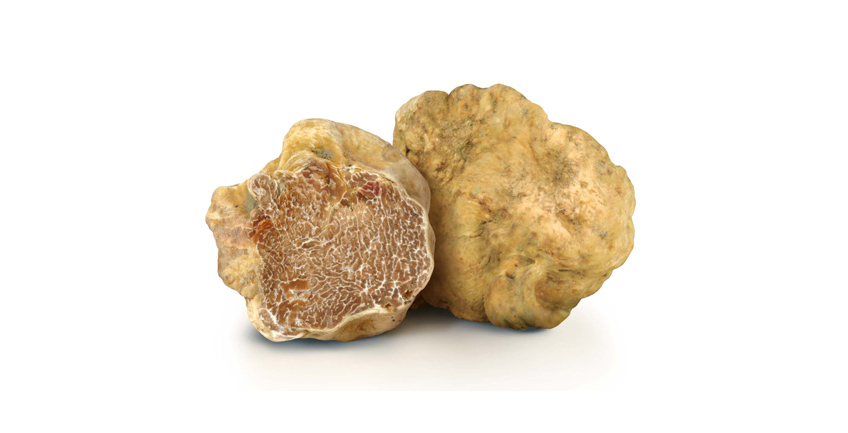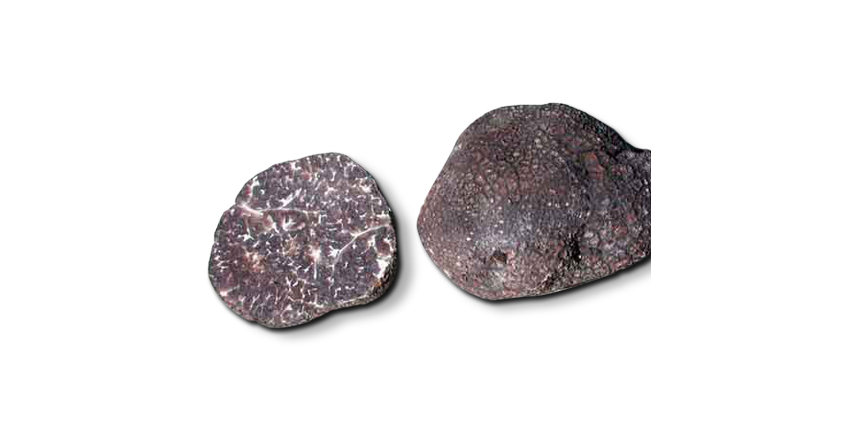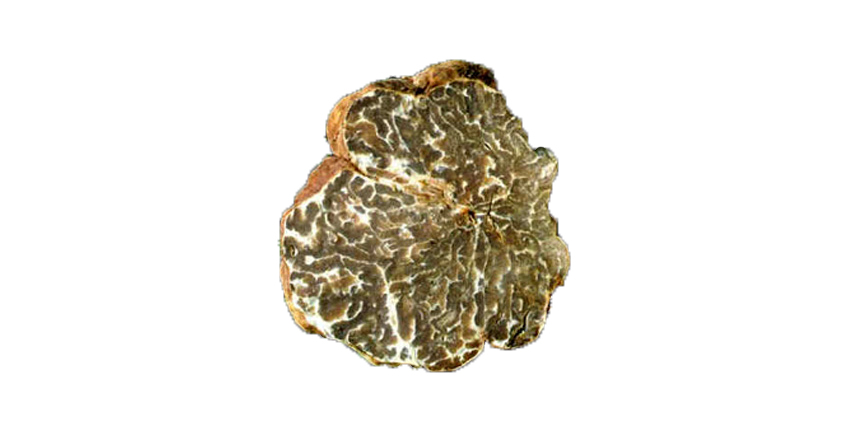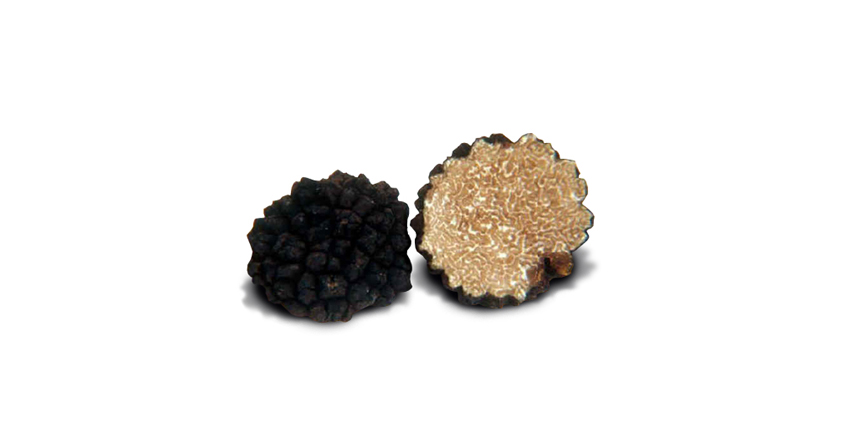Truffle types and flavors
In defining truffles, under the culinary aspect, it is fundamental and our duty to divide each into various types. For each variety of truffles, there is an important factor in the seasonal pattern that gives rise to its grade, even if collected in the same area. Different products exist both in terms of organoleptic aspects and under its morphological and chemical appearance.
The truffle has been classified as a fungus (underground) of the class of "ascomycetes" that live in "mycorrhizal" symbiosis with certain superior plants. Like all fungi, even truffles, have the absolute lack of chlorophyll and, therefore, unable to process the organic substance necessary for their development deriving from other organisms. In so doing the truffle becomes a "parasite saprophyte" of shrubs and plants, creating a symbiotic union which benefit both plants and fungi. This phenomenon creates the "mycorrhiza", which is the set of roots invaded by the mycelium. The mycorrhiza in turn can be "ectotrofica" or "endotrofica". It's called ectotrofica when the fungal hyphae penetrate the "intercellular" spaces of the early cortical layers and endotrofica, when the fungal hyphae penetrate deep inside the cells and therefore are "intracellular". The truffle has a vegetative body, that is, the mycelium, formed by a large number of interwoven filaments called "hyphae". From hyphae, through the mycelium form the bodies called "ascomi", rounded bodies of varying size, color and fragrance according to the plant symbiont. The Ascoma (truffle) is covered with a bark or "rind", rough or smooth, yellowish or black. The pulp, the inside of the truffle, more accurately called "serfdom" is meaty of various colors ranging from white to brown to gray to purple-black, sometimes pink or stained bright red shaded by fungal species and the degree of and maturation of the plant symbiont. The gleba is crossed by bundles of clear mycelial filaments, more or less thick, juicy, which confine the fertile areas called "asci" containing one or more form spores and variable sizes depending on the type.
The spores or better called "ascospores" are the reproductive organs of the species, and through them you can find out the sex. When the truffle is still young, they are distinguished in the "serfs" or pulp of the truffle female cells (oogonia), and male cells (antheridia). From the fertilization of these the young "ascot" is born. The soil plays a very important role in the life and development of the truffle. It goes without saying, that every species of truffle has a skeletal structure of the soil type and preference.
There are other edible truffles, collected from areas that have particular organoleptic qualities considerably lower than those mentioned but which are passed off as superior by persons or unscrupulous companies. We want to alert the consumer to this because although such tubers are apparently similar in appearance to the truffle and in some cases may be considered edible, in other cases not at all, in fact, may be able to cause more or less serious ailments, even effects of poisoning.
From historical evidence, it seems that the truffle has distant origins, in fact, archaeological finds dating back to 3000 years B.C.; prove that the Babylonians already were familiar with this precious tuber, originating from Asia Minor. More stories dating back to 2600 years B.C., inform us that the Pharaoh Cheope loved to taste the truffles. In the Old Testament, by Jacob (1600 B.C.) we know, that it was a particularly sought after dish. In the fourth century B.C. Aristotle and Theophrastus and later Pythagoras, savor dishes based on truffles. In ancient Rome, during the period of maximum splendor of the Roman Empire, this dish had a major presence on the Roman table, important enough to dedicate it to the goddess of love Venus. During the period of Christianity, Bishop Ambrose of Milan (339-397 A.D.), among the many dishes he preferred and that stood out seems to be those based on truffles. In the years 1,200-1,300 A.D. the poet Francesco Petrarch mentions truffles in the ninth sonnet scheme rhymes. In the Renaissance one of the most famous lovers of the tuber, was Lucrezia Borgia.
In 1831 Carlo Vittadini laid the foundations for the modern study of the truffle with his "Monographia Tuberacearum", which still bears his name and which remains one of the basic references of this precious tuber. By the twentieth century, we arrive to the period of the widest possible dissemination of the truffle and it acquires the title of "Lord of the dining halls" and refer to it as a refined tuber that accompanies most demanding and refined foods, with extraordinary features, heady scents and flavors, which today more than ever, must be present on the tables of all who are in search of true satisfaction of the senses.
The farm "Tartuffe del Castillo" by Gain Paolo Brahma, is located in the municipalities of Sellano, Cascia, Norcia and Trevi and in these areas you can find several species of truffles.The research and the collection of truffles are absolutely successful with the help of the dog, considering the weather conditions and moon phases. It is necessary and responsible on the part of the truffle hunter to restore the excavated soil after removing the tuber, so as not to cause damage to the truffle. Furthermore the collection of truffles is allowed only with the use of the "vanghetto" or "hoe" having the blade not exceeding 15 cm in length and in width the tip not exceeding 8 cm. The hunting and the collection of truffles are prohibited at night, half an hour after sunset to half an hour before sunrise and collecting unripe and spoiled truffles are strictly prohibited. The commercial farm "Tartufi del Castello", offers other types of products such as extra virgin olive oil, legumes, cereals, saffron, porcini mushrooms from the category of mushrooms: Boletus-aereus, Boletus-edulis and Boletus aestivalis, and also local wild mushrooms Agaricus Campetris (prataioli) and Turrini-Campestris (turrini) from the category of mushrooms: Agaricus-campestris, garicus-arvensis and agaricus-macrosporus.










